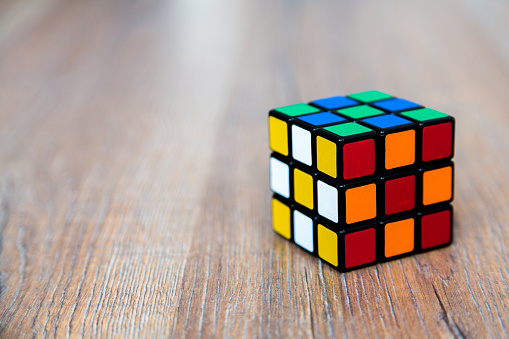The magic cube 3×3 is a popular puzzle for children and adults alike. It requires players to turn and twist the sides to solve the puzzle. The pieces slide and twist smoothly, making it a fun game to play at home or on the go. You can even use it as a gift for the holidays.
Erno Rubik
Erno Rubik developed his famous magic cube in the early 1980s. It’s one of the best-selling puzzles of all time. Now, it’s being relaunched as part of a special anniversary edition. Here’s a brief history of this iconic puzzle.
Erno Rubik was born in Budapest, Hungary, in 1944. He studied architecture and began working on three-dimensional designs in his spare time. After finishing a prototype in 1974, he filed a patent to make his creation widely available. Erno Rubik’s cube is made of interlocking colored cubes that can be rotated by twisting its horizontal and vertical planes.
Gregoire Pfennig’s magic cube
In the year 2017, Gregoire Pfennig set a new world record by building the largest order Rubik’s cube ever. This 33x33x33 cube is composed of 6,153 moveable parts and weighs 3.15 kg (6.59 lb). It took 205 hours to complete. The Belgian puzzle maker had been designing puzzles for eight years, but this was his first time making a cube.
The puzzle has six central pieces, twelve edge pieces, and eight corner pieces. To solve it, the puzzler must move each piece one position at a time until the entire cube has been rearranged. Each side has one of six possible positions. Choosing the correct position for one colour determines the position for the other colours.
Gregoire Pfennig’s QiYi
The world’s largest order Rubik’s cube was built by French puzzle designer Gregoire Pfennig in 2017. The 33x33x33 cube weighs 3.15 kg (6.59 lb), has 6,153 moveable pieces, and took 205 hours to complete. While Pfennig has been designing puzzles for eight years, this was his first time making a cube.
Yuxuan Wang
The Magic Cube is a geometric puzzle in which a chain of tiles moves through a space to fold and unfold it. There are a number of different configurations, each with a particular number of possible solutions. Its design is based on the principle of a Rearrange Jiugong game. The number of possible configurations is limited only by the flexibility of the wires that connect the pieces.
The Rubik’s Cube was originally called the Magic Cube, and was developed by Erno Rubik in 1974. It has been a popular toy for children for decades, and was once classified as one of the world’s top 100 most influential inventions of the twentieth century. It is also regarded as the world’s most popular puzzle and has won several awards, including the German Game of the Year special award and similar awards in the UK, France, and the US.
Singmaster notation
Rubik’s cube solution guides generally use Singmaster notation to display algorithms. Singmaster notation is a relative representation of cube movements that allows algorithms to be written in any order. The notation was devised by David Singmaster, and is widely used in solving Rubik’s cube puzzles.
To write Singmaster notation for a Magic Cube 3×3, one would use the letters “f” and “u” to represent the front faces. “F'” is used to refer to the front face of a 3×3 cube, while “U3” is used to refer to all three U layers.
Orienting the yellow corners to finish the cube
To finish the magic cube, you will need to orient the yellow corners in order. The first step in this process is to rotate the top layer clockwise. Then, move the yellow corner piece to the front-right position. Once you have positioned the yellow corner, turn the top layer clockwise again. You will need to complete this process four times.
The next step in this process is to rotate the top layer to bring the two yellow panels together. Ideally, you should have three yellow panels in a row that align horizontally.
